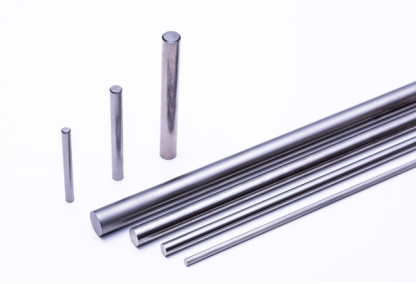Discover the power of paeonia lactiflora extract - a natural skincare gem that rejuvenates and revitalizes your skin. Say goodbye to dullness and hello to a radiant glow with this potent ingredient. Packed with antioxidants and anti-inflammatory properties, paeonia lactiflora extract soothes and nourishes, leaving your skin looking refreshed and youthful. Whether you're dealing with dryness, redness, or signs of aging, this extract offers a gentle yet effective solution for all skin types.
Key Takeaways
-
Consider the Source: When choosing Paeonia lactiflora extract, opt for reputable sources to ensure quality and effectiveness.
-
Consult a Professional: Before incorporating Paeonia lactiflora extract into your routine, consult with a healthcare provider or herbalist for personalized guidance.
-
Start Slow: If you're new to using Paeonia lactiflora extract, begin with a small dose to monitor how your body responds.
-
Monitor Effects: Keep track of any changes or reactions when using Paeonia lactiflora extract to assess its impact on your health.
-
Be Informed: Educate yourself on the properties, benefits, and potential side effects of Paeonia lactiflora extract to make informed decisions.
-
Respect Tradition: Acknowledge the historical and traditional uses of Chinese Peony in herbal medicine to appreciate its cultural significance.
Botanical Information on Paeonia lactiflora
Physical Characteristics
Paeonia lactiflora, commonly known as peony flower, is a perennial plant with large, showy flowers and deeply lobed green leaves. The flowers come in various colors such as white, pink, and red, adding a vibrant touch to gardens.
Native Habitat and Geographical Distribution
This species is native to China, specifically the regions of Shaanxi and Gansu provinces. Paeonia lactiflora thrives in temperate climates and can be found growing in well-drained soils under full sun or partial shade.
Significance in Traditional Chinese Culture
In traditional Chinese culture, Paeonia lactiflora holds immense significance as it symbolizes wealth, honor, and prosperity. It is often referred to as the "King of Flowers" and is widely used in various cultural ceremonies and celebrations.
Classification in the Peony Family
Paeonia lactiflora belongs to the family Paeoniaceae, which includes other peony species. One of the notable compounds found in this plant is oxypaeoniflorin, known for its potential health benefits and medicinal properties.
Key Compounds in Paeonia lactiflora
Major Compounds
Paeonia lactiflora extract contains paeoniflorin, a prominent bioactive compound known for its anti-inflammatory and antioxidant properties. Various flavonoids like catechin and quercetin are present, contributing to its therapeutic effects.
The paeoniflorin in Paeonia lactiflora plays a crucial role in reducing inflammation and oxidative stress in the body. These compounds act as powerful antioxidants, protecting cells from damage caused by free radicals.
Health Benefits
Paeoniflorin has been associated with numerous health benefits, including alleviating pain, reducing swelling, and improving liver function. Its anti-inflammatory properties make it valuable in treating conditions like arthritis and skin disorders.
The flavonoids found in Paeonia lactiflora also offer a range of health benefits. For example, catechin exhibits antimicrobial properties, while quercetin is known for its antiviral and anti-cancer effects.
Extraction Methods
The extraction of key compounds from Paeonia lactiflora involves several techniques to isolate paeoniflorin and other beneficial components. Common methods include solvent extraction, steam distillation, and supercritical fluid extraction.
vent extraction is widely used to obtain paeoniflorin due to its efficiency in separating the compound from plant material. Steam distillation is preferred for extracting volatile compounds like essential oils, while supercritical fluid extraction ensures high purity levels.
Understanding Paeonia lactiflora Properties
Chemical Components
Paeonia lactiflora extract contains various chemical components that contribute to its medicinal properties. One key compound is peoniflorin, known for its therapeutic effects in traditional medicine.
The properties of Paeonia lactiflora are closely linked to its chemical composition. Peoniflorin, a bioactive compound, exhibits antioxidant and anti-inflammatory characteristics, making it valuable in treating various health conditions.
Antioxidant Benefits
Paeonia lactiflora extract is renowned for its potent antioxidant benefits. These properties help combat oxidative stress in the body, protecting cells from damage caused by free radicals.
-
Pros:
-
Effective in neutralizing harmful free radicals.
-
Supports overall cellular health and function.
-
Cons:
-
May interact with certain medications, leading to potential side effects if not used cautiously.
Anti-Inflammatory Effects
The anti-inflammatory effects of Paeonia lactiflora extract play a crucial role in managing inflammation-related ailments. By reducing inflammation, this extract aids in alleviating pain and swelling.
When consumed, the extract targets specific pathways involved in the inflammatory response, modulating cytokine production and enzyme activity to achieve a balanced immune response.
Molecular Interactions
At a molecular level, Paeonia lactiflora extract interacts with biological systems by influencing gene expression and protein synthesis. These interactions regulate key processes related to inflammation and oxidative stress.
The unique molecular interactions of the extract enable it to exert precise effects on cellular signaling pathways, promoting overall health and well-being.
https://www.nutragreenbio.com/white-peony-root-extract-powder.html
Nutra Green

